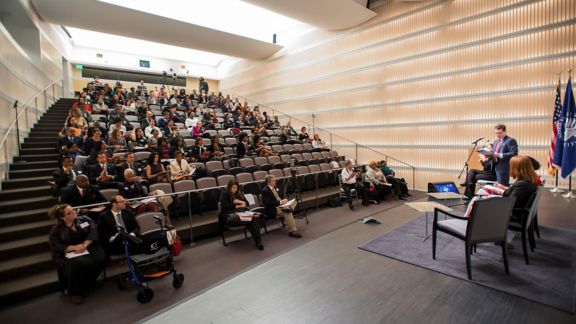COVID-19 Prevention Behaviors

Problem
Few health education materials reflect the lived experience of people with disabilities.
Some people with disabilities are more likely to become infected with SARS-COV-2 or experience severe illness from COVID-19. Practices such as handwashing, cleaning and disinfecting surfaces, wearing masks, and physical distancing are recommended non-pharmaceutical strategies for reducing severe illness and hospitalization from COVID-19. Yet, there are few nationally available, audience-tested health promotion materials specifically designed to encourage and promote COVID-19 prevention practices among individuals with disabilities.
Solution
NORC tested newly developed COVID-19 prevention messages and materials tailored for individuals with vision, hearing, mobility, cognitive, and self-care disabilities.
NORC conducted mixed-methods research among U.S. adults with disabilities to test health education messages and materials related to four behaviors that can mitigate the spread of SARS-CoV-2. Using NORC’s AmeriSpeak panel, NORC conducted a survey among 497 U.S. adults with disabilities to assess attitudes, behaviors, and barriers related to COVID-19 prevention behaviors.
The research measured constructs from the Health Belief Model including perceived susceptibility and perceived severity of COVID-19 and perceived barriers to and self-efficacy with performing COVID-19 prevention behaviors. This survey also tested a series of message statements related to four COVID-19 prevention behaviors tailored to people with different disabilities (i.e., hearing, vision, mobility, cognitive, self-care). Follow-up qualitative interviews were conducted with 30 individuals who participated in the survey to test related concepts. The research helped to ensure the health education messages were understandable, feasible, and motivating.
Result
The research provided important audience feedback to support development of a suite of health education materials, inclusive for people with disabilities.
Research results underscored that disability audience, communication messengers, dissemination channels, and accessibility are important considerations when tailoring messages for people with disabilities.
Related Tags
Project Leads
-
Jennifer Berktold
Principal Research ScientistProject Director -
Sarah Davis Redman
Principal Research ScientistSenior Staff








